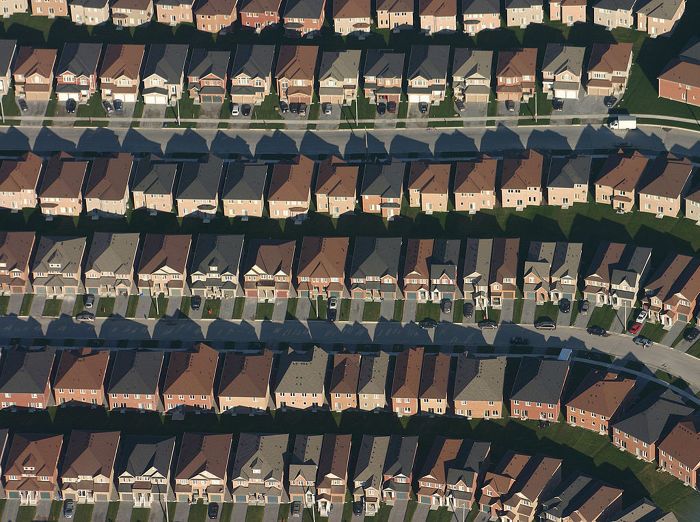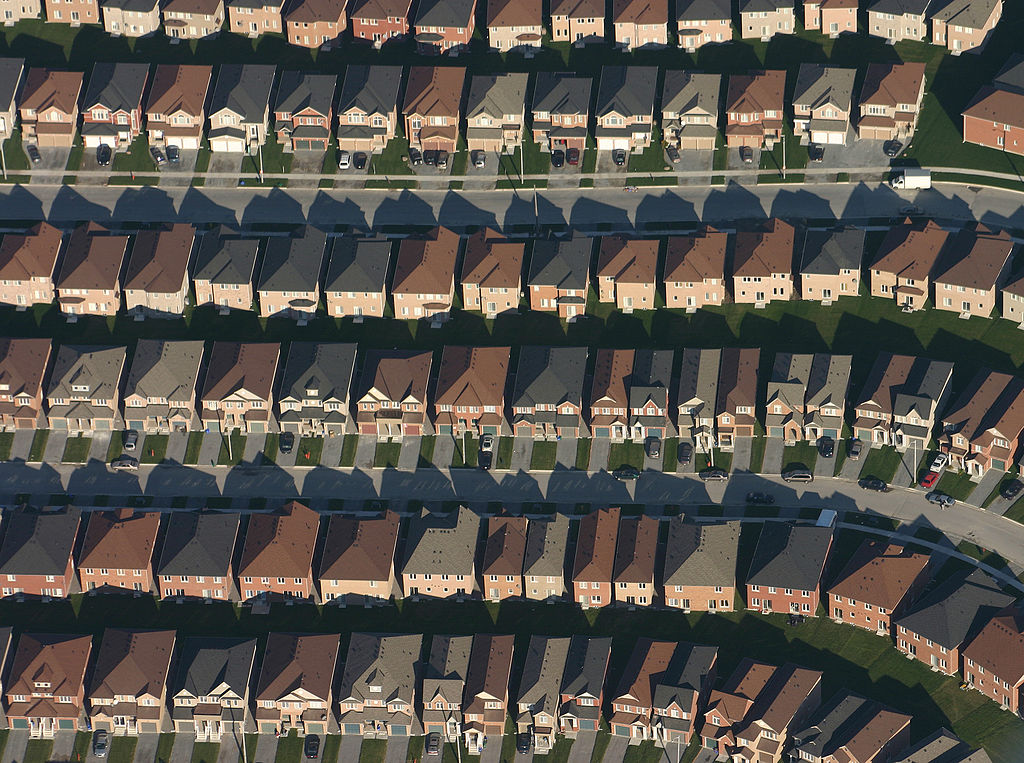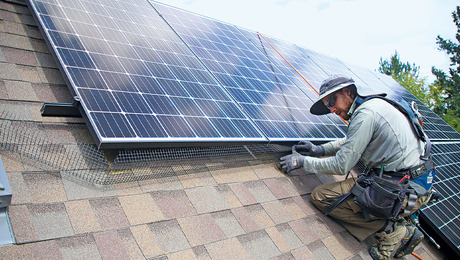
Suburban sprawl means less farmland and reduced agricultural productivity, dirtier air and water, and more traffic congestion, a new study says, and it all adds up to increased costs of about $1 trillion a year in the U.S.
The study by The New Climate Economy is an attempt to quantify the economic costs of sprawl (“dispersed, automobile-oriented, urban-fringe development”) while pointing out the benefits of compact, mixed-use building (“smart growth”).
“Sprawl provides various benefits, but these are mostly direct benefits to sprawled-community residents, while many costs are external, imposed on nonresidents,” the report says. “This analysis indicates that sprawl imposes more than $400 billion dollars in external costs and $625 billion in internal costs annually in the U.S., indicating that smart growth policies which encourage more efficient development can provide large economic, social, and environmental benefits.”
In other words, sprawl can be great, if expensive, for people who live there, but not so great for people who don’t.
Higher transportation expenses, less mobility
Living in the suburbs inevitably means a lot more driving, and less walking, and that exacts a surprisingly high price.
Vehicle costs alone approach $3000 a year, before adding costs associated with travel time, vehicle operation, parking, air pollution, water pollution, and traffic accidents.
Traffic death rates are two to five times as high in sprawled urban areas as they are in “smart-growth communities.”
And because suburban development discourages walking, cycling, and public transportation, the authors said, it tends to impose “particularly large burdens on physically, economically, and socially disadvantaged people.”
“To the degree that sprawl concentrates poverty in urban neighborhoods, it tends to exacerbate social problems such as crime and dysfunctional families,” it continues.
The authors said costs cited in the report reflect conditions in North America, but were transferable to developing countries.
“Although many of these costs are lower in absolute value in developing countries, due to lower wages and property values, they are probably similar relative to incomes and regional economies,” the report says. “As a result, smart growth policies that create more compact communities can provide substantial economic, social, and environmental benefits in both developed and developing countries.”
Fine Homebuilding Recommended Products
Fine Homebuilding receives a commission for items purchased through links on this site, including Amazon Associates and other affiliate advertising programs.

Handy Heat Gun

Affordable IR Camera

8067 All-Weather Flashing Tape

Suburban sprawl is expensive. Development patterns that favor suburban, vehicle-intensive development over compact urban housing increases expenses in a variety of ways--from reduced farm production to higher traffic-fatality rates.



























View Comments
Horse Feathers!
One can, by rigging the weighing of various factors, make a study come out and say anything they want. This is not news.
Here's the news: The best measure of the most valuable use for a piece of land is its' selling price, in a free economy.
Example: The areas around Chicago are rich in surface-accessible coal, are among the richest farmland in the world, and next to a major urban hub. In the 60's, the simple economic facts led to housing / suburbs winning out in the use competition.
Another way to look at it is this way: Those suburbs were populated by folks who spent large sums, took on huge burdens, to choose these suburbs over the urban center.
I don't see any tidal wave of folks moving back. Guess they still consider living in the suburbs a net gain.
It's ironic to hear someone praise India's "country of villages." Just what do you think the suburbs are, but villages?
Social architects, as well represented by LEED, continue to glorify, advocate, and try to impose all manner of living choices that have either failed completely- or proven to be far less desirable than whatever system they replaced.
Don't take my word for it. Just look around you: the most prosperous areas have lots of "suburb," while the most regressive areas have none. The absolute worst places are the ones that have been experimenting with social engineering since the 60's.